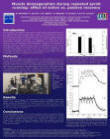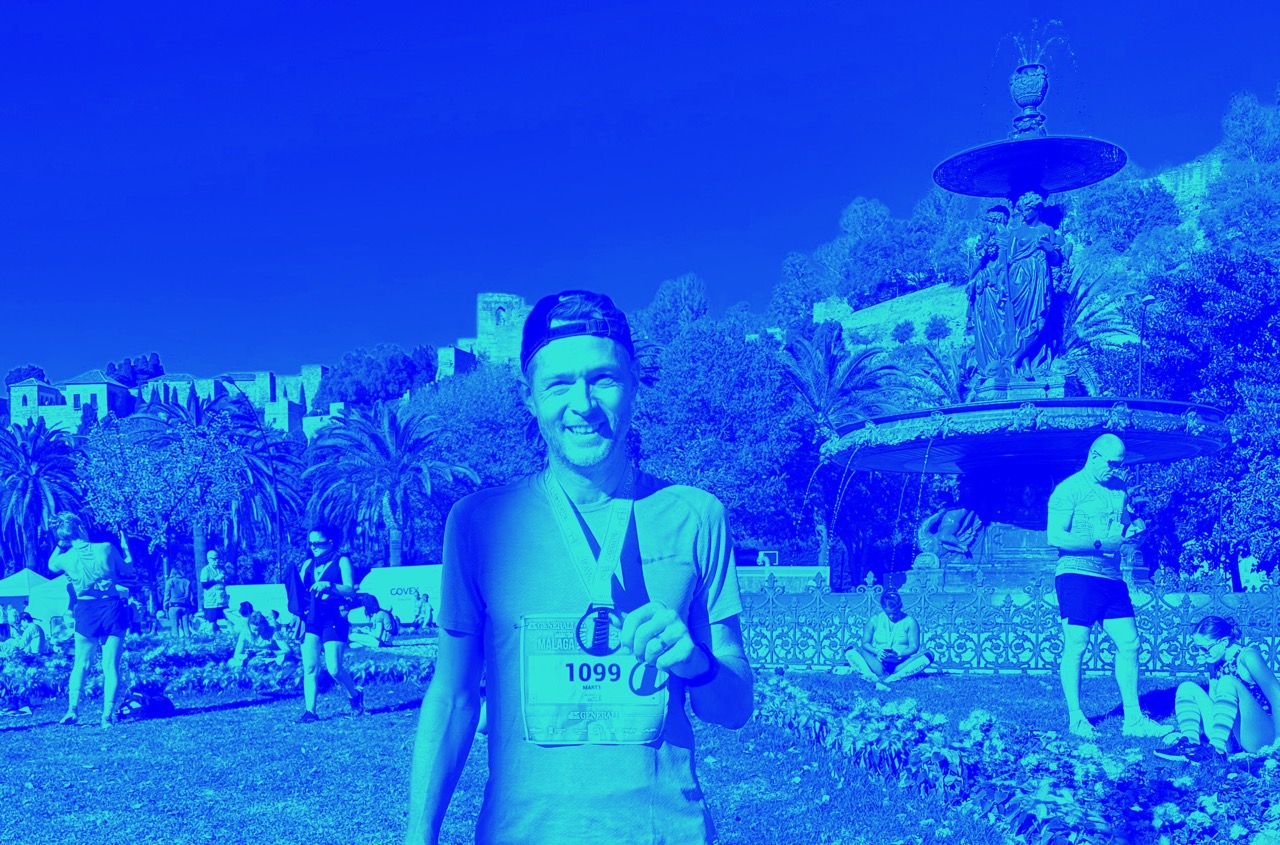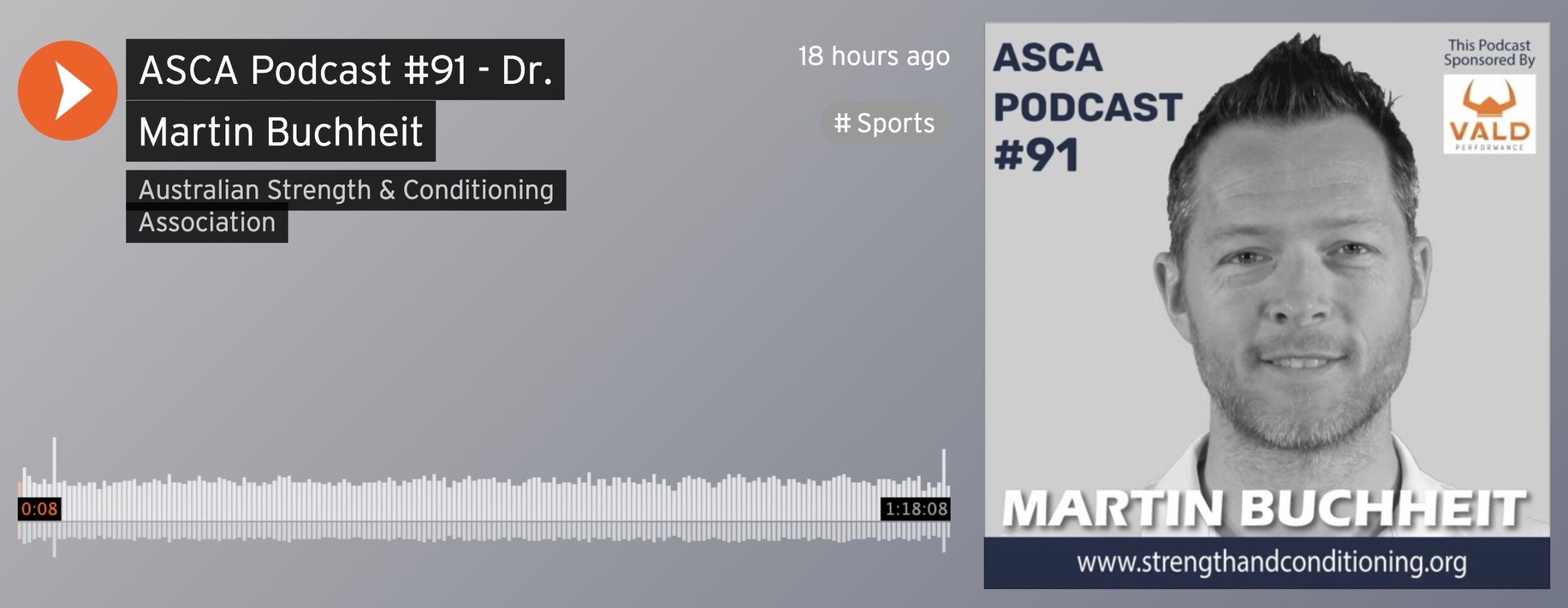Muscle deoxygenation during repeated sprint running
Poster BUCHHEIT – RSA mO2 – IJSM 2009
Muscle deoxygenation during repeated sprint running: Effect of active vs. passive recovery.
Source
Faculté des sciences du sport, Laboratoire de Recherche: Adaptations Physiologiques à L’Exercice et Réadaptation à I’Effort, Amiens, France. martin.buchheit@u-picardie.fr
Abstract
The purpose of this study was to compare the effect of active (AR) versus passive recovery (PR) on muscle deoxygenation during short repeated maximal running. Ten male team sport athletes (26.9+/-3.7y) performed 6 repeated maximal 4-s sprints interspersed with 21 s of either AR (2 m.s (-1)) or PR (standing) on a non-motorized treadmill. Mean running speed (AvSp (mean)), percentage speed decrement (Sp%Dec), oxygen uptake (V O (2)), deoxyhemoglobin (HHb) and blood lactate ([La] (b)) were computed for each recovery condition. Compared to PR, AvSp (mean) was lower (3.79+/-0.28 vs. 4.09+/-0.32m.s (-1); P<0.001) and Sp%Dec higher (7.2+/-3.7 vs. 3.2+/-0.1.3%; P<0.001) for AR. Mean V O (2) (3.64+/-0.44 vs. 2.91+/-0.47L.min (-1), P<0.001), HHb (94.4+/-16.8 vs. 83.4+/-4.8% of HHb during the first sprint, P=0.02) and [La] (b) (13.5+/-2.5 vs. 12.7+/-2.2 mmol.l (-1), P=0.03) were significantly higher during AR compared to PR. In conclusion, during run-based repeated sprinting, AR was associated with reduced repeated sprint ability and higher muscle deoxygenation.
Repeated-sprint performance in team sport players: associations with measures of aerobic fitness, metabolic control and locomotor function.
Source
Physiology Unit, Sport Science Department, Aspire, Academy for Sports Excellence, Doha, Qatar. martin.buchheit@aspire.qa
Abstract
To examine the respective associations between indices of aerobic fitness, metabolic control and locomotor function and repeated sprint-performance, 61 team sport players performed: a repeated-sprint sequence (RSS), an incremental test to exhaustion to determine maximal oxygen uptake (V˙O2max) and peak incremental test speed (Inc. test speed), and 2-4 submaximal runs to determine the time constant of the primary phase of V˙O2 kinetics at exercise onset (V˙O2τon) and cessation (V˙O2τoff). The best (RSbest) sprint times and mean sprint times (RSmean) and the percent sprint decrement (%Dec) were calculated. RSmean was almost perfectly correlated with RSbest (r=0.92;90%CL(0.88;0.95)), largely correlated with Inc. test speed (r=-0.71;90%CL(- 0.79; - 0.59)) and moderately correlated with V˙O2max (r= - 0.58;90%CL(- 0.70; - 0.43)); the correlations with V˙O2τon or V˙O2τoff were unclear. For%Dec, the correlations with Inc. test speed, V˙O2max and V˙O2τon were moderate (r=- 0.41;90%CL(- 0.56; - 0.23)), small (r=- 0.26;90%CL(- 0.43; - 0.06)) and small (r=0.28;90%CL(0.09;0.46)), respectively. Stepwise multiple regression analyses showed that the only significant predictors of RSmean were RSbest and Inc. test speed (r 2=0.88). Inc. test speed and RSbest were also the only significant predictors of %Dec (r 2=0.26). Present results obtained in a large sample of team sport players highlight that locomotor factors (i. e., RSbest and Inc. test speed) show much larger associations with repeated-sprint performance than V˙O2max and V˙O2 kinetics.




